Maybe you don’t realize that there are swimming bugs in your pool. They feed on algae and microorganisms commonly found in pool water.
Naturally, insects such as water bugs are part of outdoor activities. Although water bugs are not likely to bite, they can cause problems if they enter your swimming pool.
They really like to swim in the pool to find their food source. Especially if your swimming pool is neglected or not well maintained, you will quickly find them.
These conditions certainly make you uncomfortable when bathing, and of course you want to get rid of it all. You’re in luck while reading this article, we have a solution to get rid of water bugs from your pool quite easily.
But it will be much better when you get to know more about swimming bugs in swimming pools. It will be very helpful for you in future to deal with similar problems.
Types of Swimming Pool Bugs
Generally, there are two types of water bugs that are often found in swimming pools. The first is the water boatman and the second is the backswimmer.
However, there are actually many more types of water fleas in the world if you want to explore further. We found that there are 10 types of water bugs that have been caught living in swimming pools, they are:
Water Boatmen
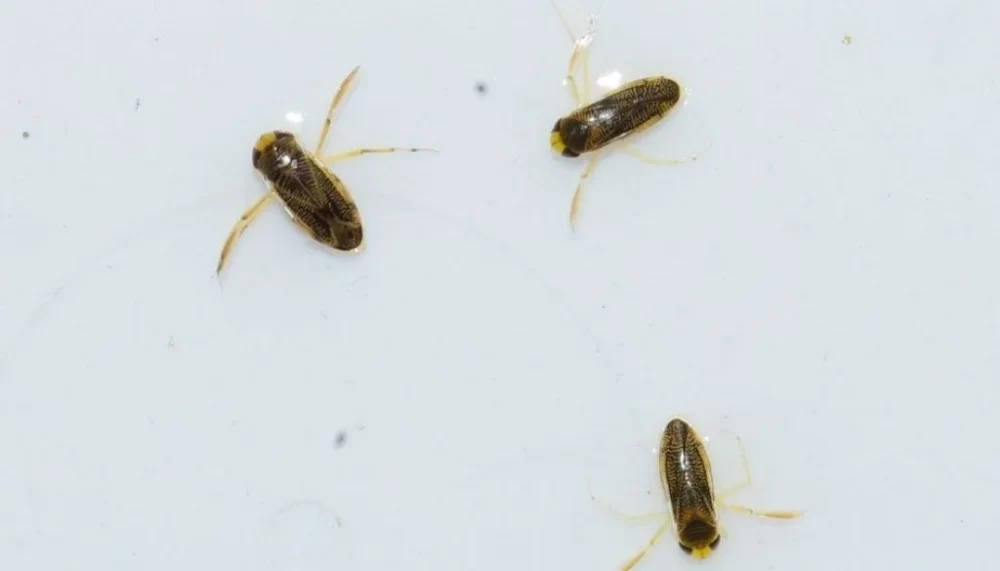
Boatman water fleas are insects that do live in swimming pools. And they can multiply and spread fairly quickly if you don’t get rid of them.
The only reason they come is because of the algae in your pond. They come and occupy your pond to forage for food and lay eggs.
Water boatmen have the ability to detect algae in the pool before you can. In fact, not only do they eat algae, they lay their eggs on algae as well.
Backswimmer
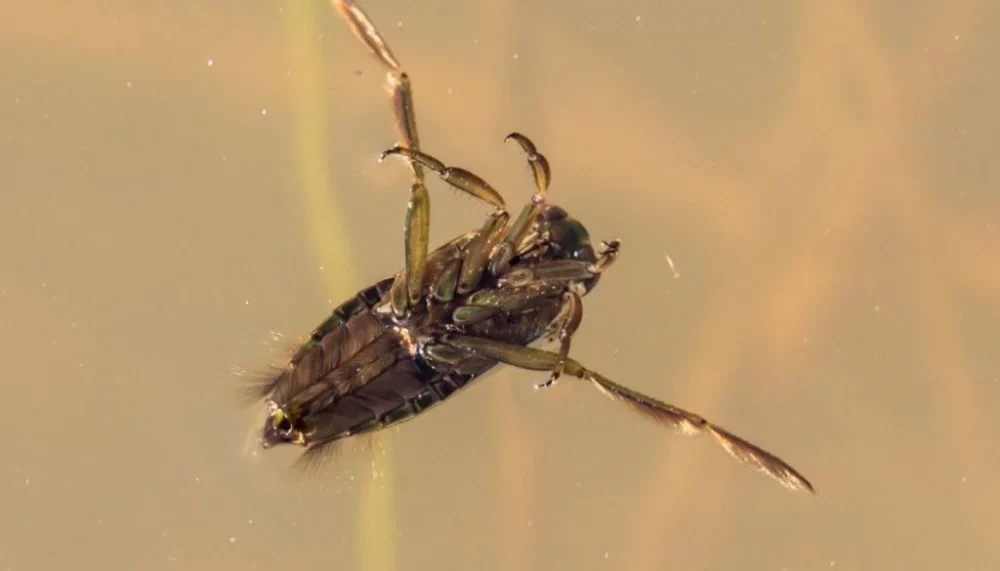
Backswimmers, also known as paddle bugs, are predators that swim on their backs with their insides up. They are predators of water boatmen and other small insects in ponds.
In addition, Backswimmers are pond insects that often bite humans. They use their tube-shaped mouth, known as a proboscis, to leave a painful bite on you.
These insects can fly but they are quite clumsy when not in the water. When outdoors, backswimmers live in lakes, rivers, and ponds to prey on small fish, insects, and tadpoles.
Read also: Heated Saltwater Pool: Everything You Need to Know!
Springtails
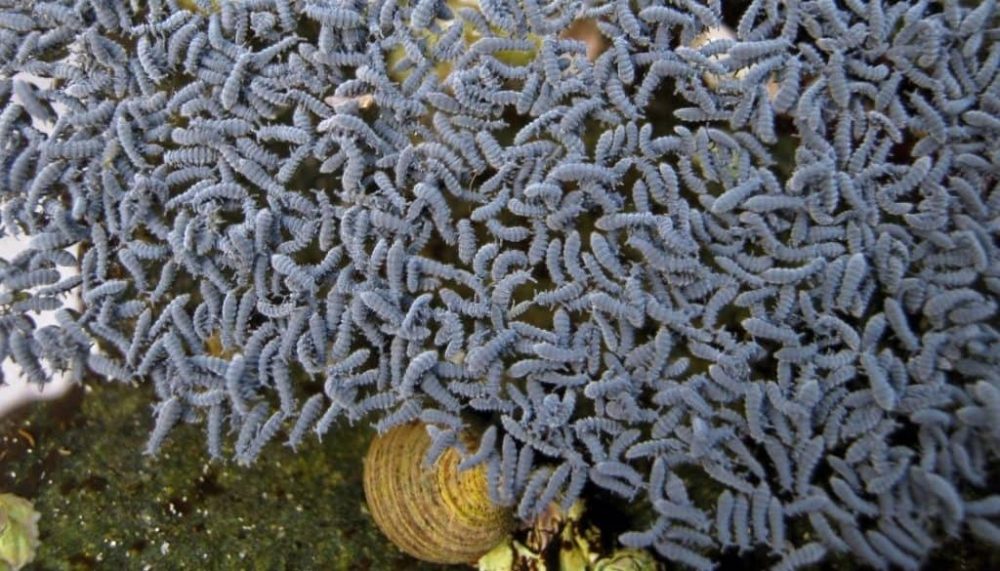
Springtails are jumping water insects that live and breed near damp places. They are often seen in places such as bathrooms, basements, and around decaying and damp organic matter.
These places provide food for them to eat and the high levels of humidity, humidity, and humidity make these places ideal places to live.
And, if you have dense vegetation around your pond then springtails can be plentiful there. So the Springtails around your pool will jump into your pool.
The worst part is that they land on the surface of your pool in swarms during the summer months. Therefore, we recommend removing vegetation close to your swimming pool.
Giant Water Bugs
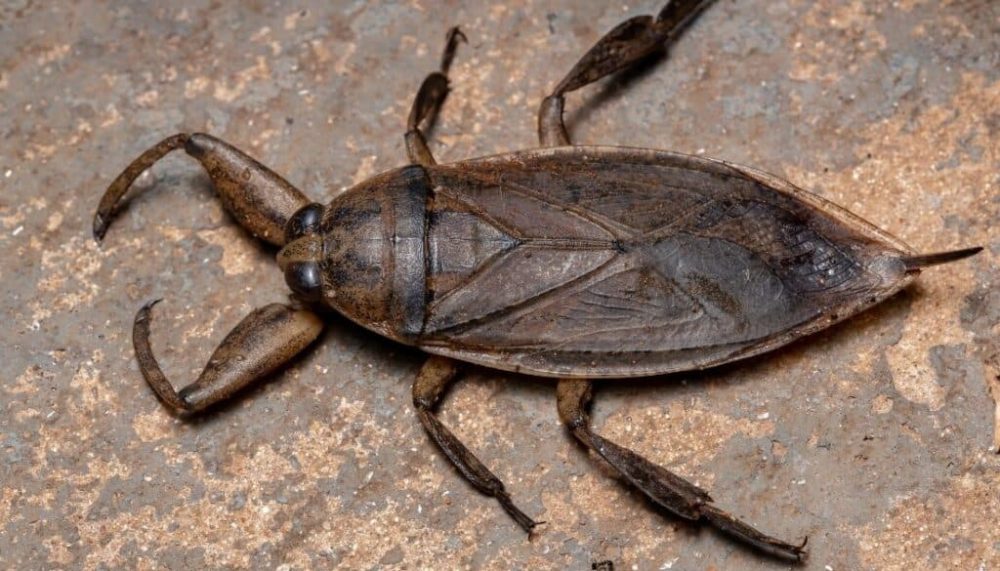
The giant water bugs is the scariest and deadliest insect you’ve ever seen in your swimming pool. Besides looking scary, he is also known as a toe-biter which can grow up to 4 inches in length.
The giant water bugs is a predator in your swimming pool and occupies the top position of the food chain. This means that all other pool bugs in your pool are food for these giant water bugs.
Giant water bugs bites are the most painful of all the pool bugs in this guide. Because they also carry poison that can cause severe pain when they bite.
But luckily, the giant water fleas are afraid of humans and they don’t enter your pond in large numbers. If they meet you in the pool, their first defense mechanism will be to play dead and secrete a foul-smelling liquid.
Predaceous Diving Beetle

Predatory diving beetles are the only swimming pool insects that are truly water beetles. They like to live in the water most of the time and are common throughout much of the US, especially in the south and southeast.
The predatory beetles have smooth, shiny backs, appearing in three colors – brownish, black, or olive. When fully grown, they measure 1.5 inches and have wings that make them good fliers.
They usually fly at night to find water sources by using the reflection of moonlight. This means that you are also interested in the reflection of the pool lights from the surface of your pool water.
Mosquitoes

Mosquitoes like places that have a water surface such as swimming pools. In fact they also often lay eggs in puddles or in your pond.
This is very common especially when you leave the pool open for days. The mosquito larvae then attract other insects such as back swimmers to your pond, making your pool as their nest.
Thrips
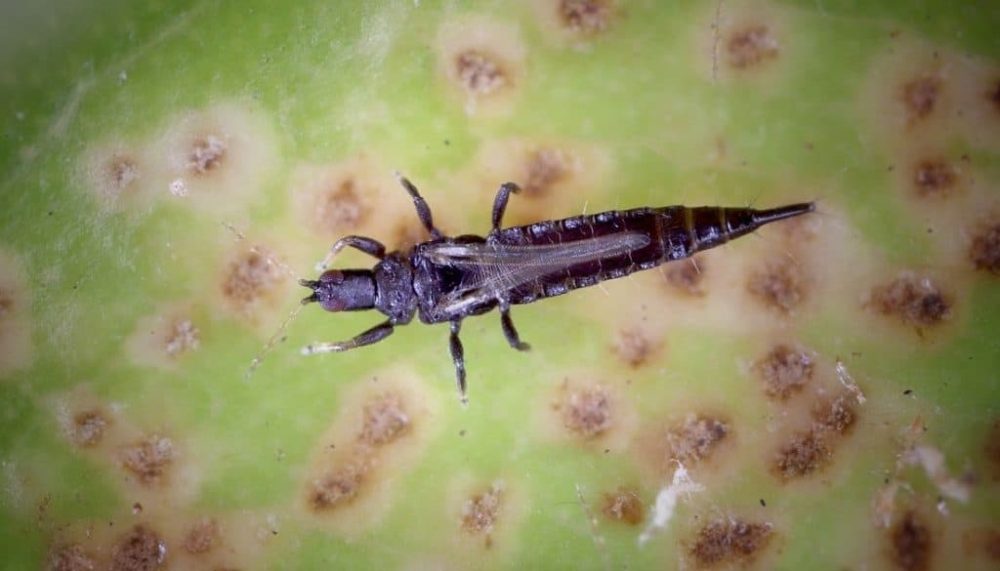
Thrips are small plant-eating aquatic insects, they feed on plants near water sources. Even though your swimming pool is not a habitat for thrips, they can land in your pond when there is dense vegetation around your pond.
Size of thrips are so tiny, only 1/20th of an inch, that it is difficult to detect them on the surface of the pool water. Thrips will only become visible when they stick to your body when you get out of the pool.
They will look like little brownish-black dots crawling across your body. Although thrips bites are not painful or carry any infection, they often do it to human.
One way to keep your pond free of thrips is to cut the plants around your pond. They are also attracted to light which causes them to sometimes enter the house.
Water Striders or Jesus Bugs
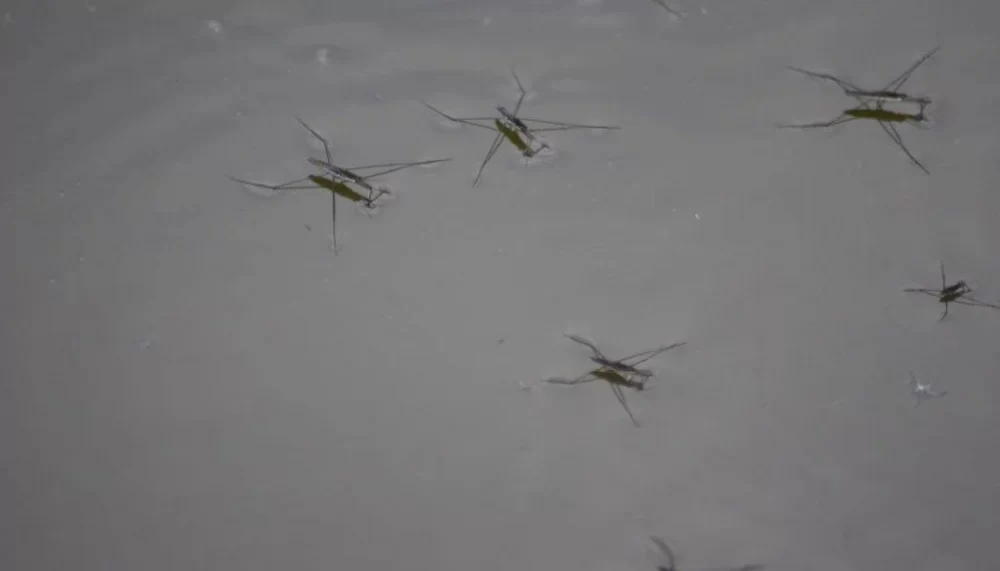
The water strider is a small black insect with long legs that often walks on the surface of pond water. It is often known as the Jesus bugs and is harmless to humans.
There has never been a case of biting and getting into your ear or nose while you are swimming in the pool. The only problem they cause is that their numbers tend to increase.
The Jesus bugs appears in your pool in search of food and it indicates that there are other small insects in your pond. They like to eat pond mites, thrips, and algae.
Red Pool Mites or Water mites
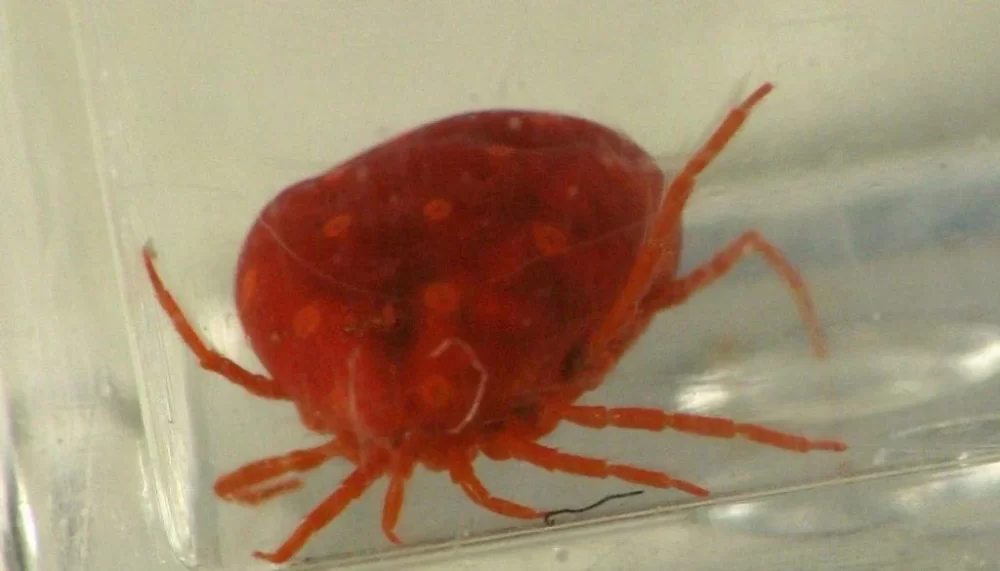
Pool mites or water mites are tiny red insects in and around swimming pools. They are difficult to see because of their small and microscopic size, but they can be seen as their numbers increase.
Water mites are attracted to your pond when your pool has algae and larvae floating in the pool. They actually help you by eating the water flea larvae in the pond.
Pool mites do not bite humans but they reproduce very quickly. They become a nuisance in your pond which will invite other insects such as rear swimmers to eat them.
Fungus Gnats
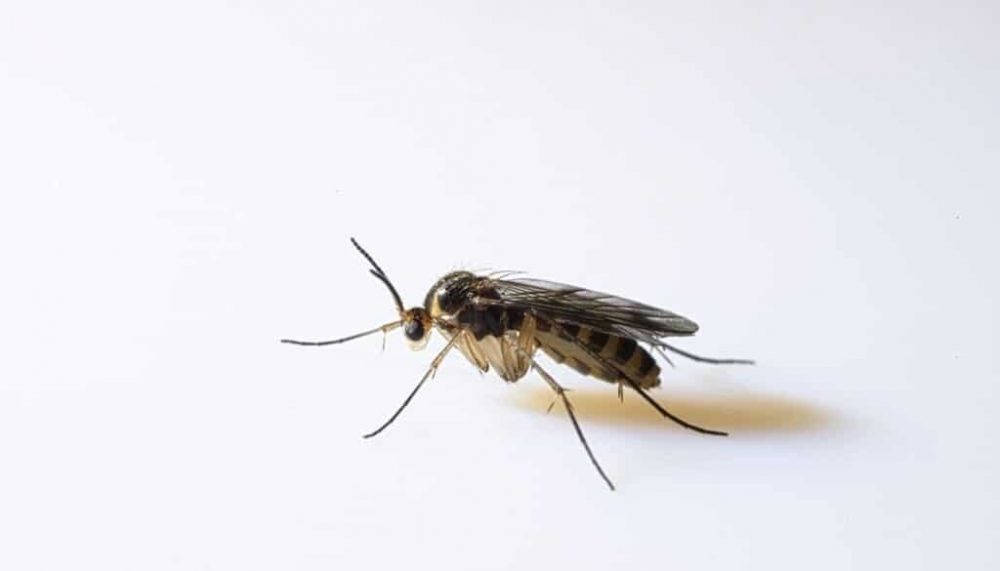
Gnats is a type of mosquito and not a group of pool insects in general. But they are often attracted to your pond to lay eggs on wet surfaces, creating a nuisance.
The worst part about gnats is that they move in flocks and female gnats bite humans. They need human blood to help the process of breeding and laying eggs.
How Do Water Bugs Get in a Pool

Water bugs usually fly here and there looking for food and shelter. Often they seek calm waters such as ponds and swamp areas for shelter.
When algae is present in your swimming pool, it becomes an attractive area for these creatures. Because they will get food and shelter at the same time in one place.
Water bugs will fly and land together on the surface of your pool in groups. Removing it is only a temporary solution, it is best to take precautions.
Getting Rid of Swimming Pool Bugs
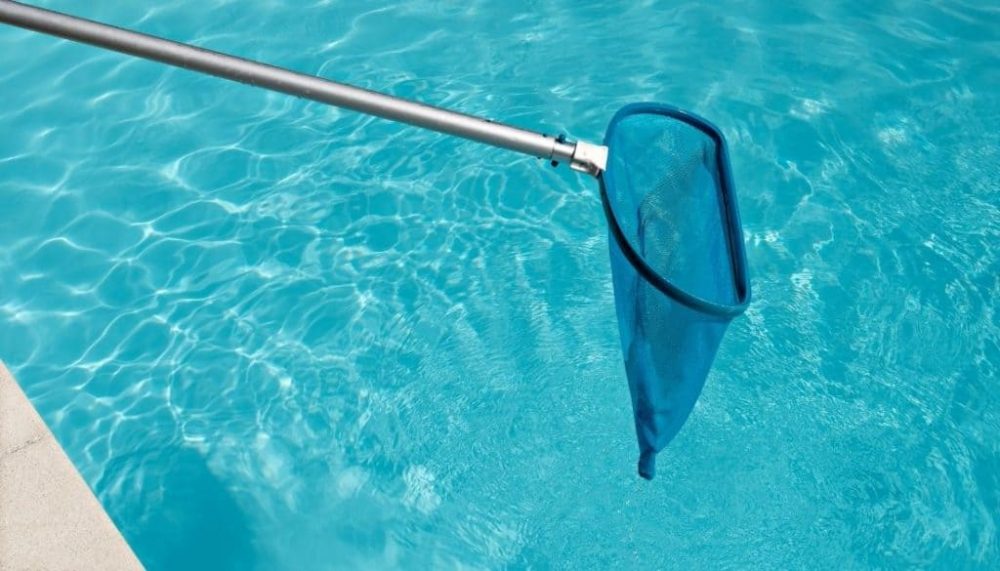
Now you know how water fleas get into your pool and what causes them. Then it is time to take steps to remove them from your pool.
There are no special skills or equipment you must have to do it. Basically you just need to kill the pool bugs and make your swimming pool bug free forever.
We have a fail-safe step-by-step guide to securing your pool from water bugs. And the best part is that you can do everything yourself, regardless of the insect.
Step #1 – Skim The Pool
Maybe you already understand that most species of water fleas live on the surface of the water. Therefore, they are easily removed by skimming the pool surface using a net or pool skimmer.
A pool skimmer is a handheld device that pool owners use to collect dirt and insects on the surface of the water. Now start the removal process by collecting as many bugs as possible from the pool with the skimmer.
Step #2 – Shock The Pool with Chlorination
One of the reasons your pool has water fleas is low chlorine levels. Chlorine in swimming pools works chemically to prevent the growth of algae and microorganisms, food for aquatic insects.
Therefore, one way to get rid of water fleas is to add chlorine to your swimming pool. To do that, the easiest way is to use chlorine tablets.
Under normal conditions the chlorine content in swimming pools is between 1 PPM and 3 PPM (parts per million). Shock chlorination means you will increase the chlorine level in your pool to 5 PPM to 7 PMM, to kill organic matter in the pool.
After that, you need to wait for the chlorine level to subside to a safe level before entering it. Usually the chlorine level reaches a safe level after 48 to 50 hours
Step #3 – Use Algaecide
After shock chlorination, the next step is to remove the algae using an algaecide. Algaecide contains calcium hypochlorite which is very effective in helping to remove algae from your swimming pool.
The thing you need to pay attention to before using algaecide is that the chlorine level in your pool must be at a safe level. So you should wait at least 48 hours after shock chlorination to use algaecide in your pool.
Step #4 – Vacuum Your Pool
After the pool has been shocked and the particles have had time to settle, it is time to clean the pool floor. You will need some vacuuming equipment to do that because the manual process is quite difficult and time consuming.
Complete a thorough vacuuming to remove hidden dirt and microscopic insects in thin crevices. Because this thin gap is a place that supports algae growth around your pool.
Step #5 – Remove Vegetation from Around The Pool
Maybe you don’t realize that the vegetation around the pool can be a place for water insects to perch. Even if you have treated your pool with chlorine or algaecide, they will return if there is vegetation around the pool.
Water bugs have the opportunity to enter your pool through plant branches. Cut tree branches that overhang the pool and maintain a distance of 10 feet between the plant and the pool to prevent reinfection.
Step #6 – Set Lights
Water bugs such as water boatmen and rear swimmers are very attracted to light. You can use it to prevent water bugs from nesting in your pool.
Place lights in your pool area and maintain a distance of at least 30 feet between the lights and the pool perimeter. This will reduce the attention of water bugs to enter your pool.
Water bugs are generally attracted to white light, but other facts say they do not like yellow light. You can use a yellow LED light near the pool as a precautionary measure for them to approach the pool.
Step #7 – Remove Any Water Stagnation Near The Pool
The final step is to get rid of standing water near the pool in your yard or garden. Because besides water bugs, mosquitoes also like to lay eggs and breed in puddles.
Get rid of standing water around your pool to help get rid of mosquitoes not only in your pool but in your home as well. Cover water holes and fix water leaks in your yard or garden.
Preventing Bugs From Entering Your Pool
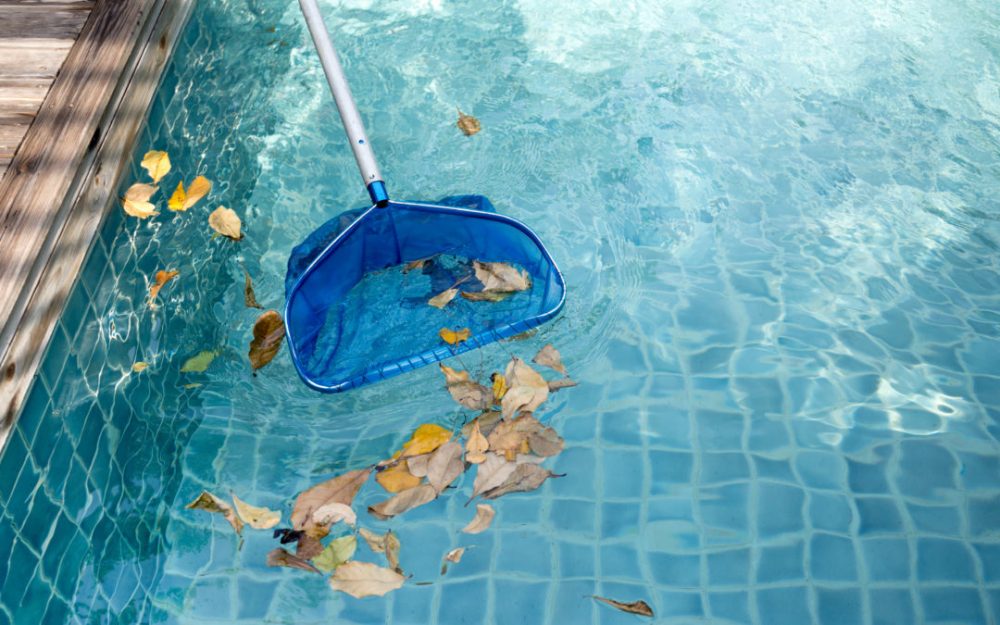
Preventing water bugs from entering your pool has never been simpler than getting rid of them. In fact, none of the above removal methods will actually prevent insects from entering your pool.
The best option for preventing swimming bugs from getting into the pool is to keep the environment clean. This aims to make your swimming pool area no longer attractive to water bugs to getting in.
These creatures only appear and nest in your pool when there is food. So taking steps to prevent algae and other microorganisms from growing in your pond is your best line of defense.
Here are some steps to prevent insects from entering your pool early on!
Read Also: Best Pool Pump Timer to Buy in 2022 – Save Your Electricity Bill!
Use of Algaecides
The use of Algaecides will prevent the growth of algae spores in your pool. This will discourage water fleas such as water boatmen from being attracted to the pond because they cannot find their main food source.
Lo-Chlor Miraclear Algaecide is a commonly used Algaecides because it has a built-in clarifier to purify pool water. Make sure you follow the manufacturer’s instructions for it to function properly.
Pool Covers
Covering the pool when the pool is not in use is effective enough to prevent water bugs from settling in the pool. If they can’t get into your pool, it means they can’t stay in your pool.
Besides, even if any insects manage to land in the pool while you’re using it, it’s not a problem. Because if you close the pool afterwards, they will have a hard time surviving in the pool.
Bug Zappers / Bug Traps
Placing flea traps around the pool will certainly help prevent them from entering your pool. It’s pretty self explanatory. But you have to be careful with this device, the risk of electric shock is definitely there.
Yellow light
If insects are attracted to white light then yellow light tends to block them. Some scientists claim that yellow light blinds certain types of pool bugs.
Although there are no specific studies on this, you can try setting your LED light to amber and turning it on at night. This simple step is quite helpful, and no matter how small your efforts to prevent water bugs from entering the pool will reduce the risk of them living in it.
Routine Maintenance
After undergoing the steps above, there is one thing that you must do afterward, it is routine maintenance. No one can completely guarantee that your pool is 100% bug free, but a good cleaning can guarantee a bug free pool 90% of the time.